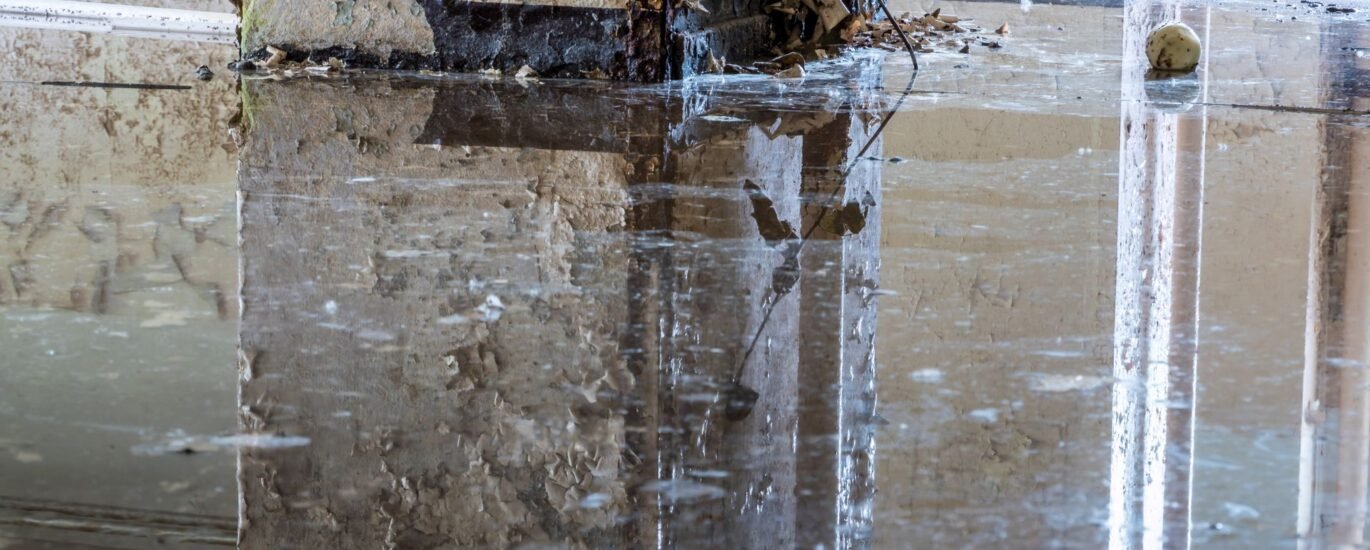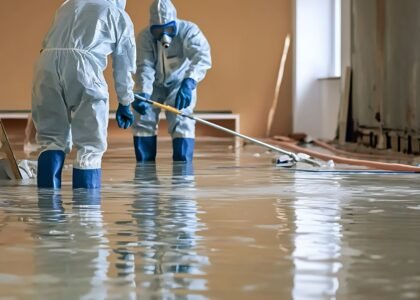When floodwater enters your property, time is not on your side. The longer water sits, the more damage it can cause. Acting fast can prevent:
- Structural damage to floors, walls, and foundations
- Mold and mildew growth, which can begin in as little as 24–48 hours
- Electrical hazards from water infiltration
- Damage to personal belongings such as furniture, electronics, and documents
- Health risks from contaminated floodwater
Professional flood restoration teams in Austin are available 24/7 for emergencies, ensuring that water extraction and drying begin as soon as possible. This rapid response reduces both repair costs and health risks for you and your family.
The Flood Damage Restoration Process: Step by Step
Every flood situation is unique, but a typical restoration process includes several key phases:
1. Emergency Contact and Assessment
The first step is to call a trusted restoration company. They’ll assess the extent of the flood damage, determine water contamination levels, and create a customized restoration plan.
2. Water Extraction
Using high-powered pumps and vacuums, professionals remove standing water from affected areas. Quick extraction prevents further damage to flooring, drywall, and furniture.
3. Drying and Dehumidification
Once the visible water is gone, powerful air movers and dehumidifiers are used to eliminate hidden moisture from walls, ceilings, and subfloors. This step is crucial for preventing mold growth.
4. Cleaning and Sanitizing
Floodwaters often carry contaminants like sewage, chemicals, and debris. Restoration teams thoroughly clean and disinfect all affected surfaces to ensure your property is safe.
5. Repairs and Restoration
Finally, damaged materials such as drywall, flooring, and insulation are repaired or replaced. The goal is to return your property to its pre-flood condition—or better.
Common Causes of Flood Damage in Austin, TX
Austin’s unique climate and geography make it especially prone to flooding. Here are some common causes:
- Heavy Rainfall and Flash Flooding – Sudden downpours can overwhelm drainage systems and cause flash floods.
- Burst or Leaking Pipes – Aging plumbing or freezing temperatures can lead to pipe bursts.
- Clogged Gutters and Drainage Systems – Poor drainage allows water to pool around foundations.
- Appliance Malfunctions – Water heaters, washing machines, and dishwashers can leak or overflow.
- Natural Disasters – Tropical storms or hurricanes can bring massive flooding to the Austin area.
Understanding these risks can help you prepare and take preventive measures before disaster strikes.
Signs of Hidden Flood Damage
Not all flood damage is visible right away. Some signs can appear days or weeks later, especially if water seeps into walls or flooring. Watch for:
- Musty or damp odors
- Peeling paint or wallpaper
- Warped floors or ceilings
- Stains or discoloration on walls
- Mold growth on surfaces or furniture
If you notice any of these symptoms after a flood, contact a restoration professional immediately to inspect your property and prevent further deterioration.
The Importance of Mold Prevention After Flooding
Mold can begin to grow within 24 hours of water exposure. Once it spreads, it can damage surfaces and release spores that affect indoor air quality.
Professional flood damage restoration includes mold remediation steps such as:
- Moisture detection using infrared cameras and meters
- HEPA air filtration to capture airborne mold spores
- Antimicrobial treatments to eliminate and prevent future growth
Taking these steps ensures your home remains healthy and safe long after the floodwaters recede.
Choosing the Right Flood Damage Restoration Company in Austin
When choosing a restoration partner, look for a company that provides:
- 24/7 emergency services
- Comprehensive restoration—from water extraction to reconstruction
- Trained and certified technicians
- Modern equipment for fast, efficient drying
- Transparent communication throughout the process
Experience matters in emergency situations. Partnering with professionals ensures that your property is restored correctly and safely from start to finish.
How to Prepare for Future Floods
While no one can fully control nature, there are proactive steps you can take to minimize flood damage in the future:
- Install a sump pump in your basement or crawlspace.
- Seal cracks in your foundation and walls.
- Elevate electrical systems above potential flood levels.
- Keep gutters and drains clear of debris.
- Store important documents and valuables in waterproof containers.
Preparedness goes a long way toward protecting your home and reducing future repair costs.
When to Call for Help
If your home or business in Austin has suffered from flood damage—whether it’s a few inches of water or a major flood—it’s essential to act fast. Every hour counts when it comes to water damage.
You can reach out directly to Flood Damage Restoration to learn about professional recovery options tailored to Austin’s unique weather conditions and building types.
For direct assistance or to schedule a consultation, visit Contact Us and connect with a restoration expert right away.
Final Thoughts
Flooding can feel overwhelming, but you don’t have to face it alone. Professional flood damage restoration in Austin, TX, offers the expertise, technology, and compassion needed to bring your property back to life. From emergency water removal to full structural repair, a dedicated restoration team ensures your space is safe, clean, and comfortable once again.
By acting quickly and trusting experienced professionals, you can recover faster and prevent lasting damage to your home or business.



